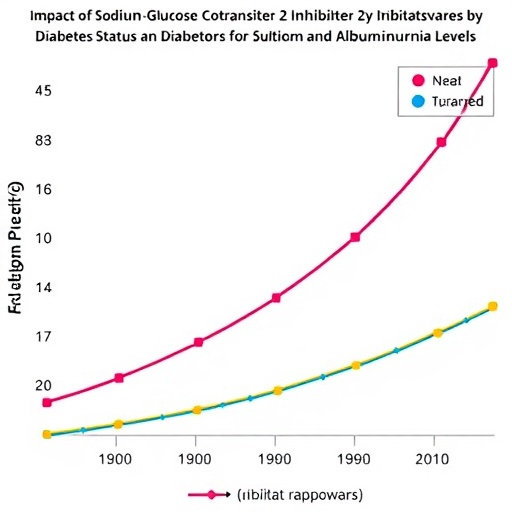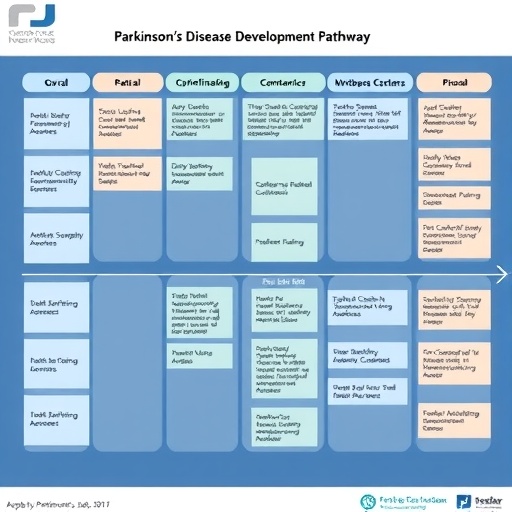In the evolving landscape of cancer treatment, the utilization of advanced radiation therapy systems has markedly improved the precision and effectiveness of tumor targeting. Among these systems, CyberKnife radiosurgery stands out, offering a refined approach to delivering high doses of radiation with minimal damage to surrounding healthy tissues. A recent study conducted by Tian and colleagues explores the dosimetric outcomes between two distinct collimation techniques—multi-leaf and circular collimators—in the context of CyberKnife treatments. This comparative analysis spans various lesion types, specifically targeting intracranial, hepatic, and prostatic tumors, with a focus on differing tumor sizes and complexities.
Understanding the intricacies of radiosurgery requires familiarity with the technology and methodology employed. The CyberKnife system operates as a robotic radiosurgery platform that enables the delivery of precise radiation doses to tumors, while compensating for patient movement and organ motion. This adaptability allows for the tackling of tumors located in difficult-to-reach areas or those adjacent to sensitive structures. The two collimator systems examined in the study—multi-leaf and circular—serve different purposes in shaping and directing the radiation beam. Multi-leaf collimators consist of adjustable leaves that can conform to the shape of a tumor, while circular collimators provide a uniform beam profile suitable for more homogenous tumor geometries.
The dosimetric analysis carried out in the study aims to elucidate the advantages and limitations of each collimation strategy. One primary focus is the assessment of dose distribution and conformity indices, crucial metrics in determining the effectiveness of radiation therapy. High conformity indices indicate a better alignment of the prescribed radiation dose to the tumor’s contours, which can significantly enhance treatment efficacy while protecting surrounding healthy tissue. The study endeavors to clarify whether one collimator type outperforms another in achieving optimal dose distribution within diverse tumor types.
Furthermore, the research highlights the importance of considering tumor size and complexity when determining the most effective treatment planning. As tumors vary widely in shape, volume, and proximity to critical structures, a one-size-fits-all approach to collimation is insufficient. For instance, smaller, irregularly shaped tumors may benefit from the adaptability of multi-leaf collimators, which can tailor the radiation dose more precisely. In contrast, larger tumors may receive adequate treatment using circular collimators due to their simpler geometry.
Patient safety and treatment outcomes are central to the discussion, as the precision of radiation delivery plays a crucial role in minimizing adverse effects. The study carefully analyzes both techniques in relation to their associated risks, including the potential for collateral damage to healthy tissue. A critical element of this analysis involves evaluating dose-volume histograms (DVH), which graphically represent the dose distribution across various tissues. This method allows researchers to identify areas of over- or under-dosing, thereby informing potential adjustments in clinical practice.
The results detailed in the study indicate that both collimation techniques possess distinctive merits and caveats. In certain instances, the multi-leaf collimator demonstrated superior dose conformity and homogeneity, making it a compelling choice for challenging tumor geometries. However, in cases where treatment planning time and complexity are factors, circular collimators may provide a more expedient solution without compromising therapeutic effectiveness. This nuanced understanding of each system’s capabilities emphasizes the necessity of tailored treatment plans based on individual patient characteristics.
Moreover, as the field of medical imaging continues to develop, future research could expand upon this work by incorporating sophisticated imaging modalities to further optimize treatment planning. Advanced imaging techniques such as MRI and PET scans can provide vital insights into tumor metabolism and microenvironment, potentially leading to more personalized treatment regimens. The integration of imaging with treatment planning may unlock new avenues for enhancing the precision of radiosurgery across various clinical contexts.
In light of these findings, it is evident that continuous advancements in radiotherapy technology are critical for the ongoing evolution of cancer treatment. As clinical practices adopt the latest evidence-based approaches, collaborative efforts between physicists, oncologists, and medical technologists will be essential in driving improvements in patient outcomes. The dosimetric comparison highlighted in this study serves as a critical step in identifying the most effective treatment methods tailored to individual tumors.
The implications of this research extend beyond technical improvements; they also resonate deeply within the patient experience. For individuals facing a cancer diagnosis, the assurance of precise treatment with minimal side effects can be life-altering. Engaging in rigorous clinical trials and research studies such as the one conducted by Tian et al. is paramount in advancing the standard of care and refining treatment modalities that prioritize patient safety and therapeutic success.
As we move forward, the integration of innovative technologies and comprehensive research will play an instrumental role in shaping the future of oncological care. Collaborative explorations that examine the multifactorial aspects of treatment techniques, including patient selection and tumor characteristics, will remain critical for optimizing therapeutic strategies. Continued inquiry into the comparative effectiveness of different methodologies will ensure that the fight against cancer remains robust and adaptive in the face of evolving challenges.
Overall, the dosimetric evaluation of multi-leaf and circular collimator-based CyberKnife radiosurgery paves the way for future advancements in oncological therapies. By systematically comparing these two collimation strategies, researchers are enhancing the framework for treatment planning, resulting in improved outcomes for patients battling tumors of varying complexities. Through a commitment to research, innovation, and personalized care, the medical community can continue to progress toward better therapies and greater hope in the fight against cancer.
In conclusion, this comprehensive planning study contributes valuable insights into the optimization of CyberKnife radiosurgery techniques for treating diverse tumors. By addressing the nuances of tumor size and complexity while weighing the strengths and weaknesses of each collimation approach, healthcare providers can better tailor treatment to individual needs, ultimately fostering improved clinical outcomes. As the landscape of cancer treatment continues to evolve, ongoing exploration will be essential in unlocking the full potential of advanced radiation therapies.
Subject of Research: Dosimetric Comparison of Multi-Leaf and Circular Collimator-based CyberKnife Radiosurgery
Article Title: Dosimetric Comparison of Multi-Leaf and Circular Collimator-based CyberKnife Radiosurgery for Targets of Varying Size and Complexity in Intracranial, Hepatic, and Prostatic Lesions: A Comprehensive Planning Study.
Article References:
Tian, B., Xu, H., Bian, Y. et al. Dosimetric Comparison of Multi-Leaf and Circular Collimator-based CyberKnife Radiosurgery for Targets of Varying Size and Complexity in Intracranial, Hepatic, and Prostatic Lesions: A Comprehensive Planning Study. J. Med. Biol. Eng. (2025). https://doi.org/10.1007/s40846-025-00982-z
Image Credits: AI Generated
DOI: 10.1007/s40846-025-00982-z
Keywords: CyberKnife, radiosurgery, multi-leaf collimator, circular collimator, dosimetry, tumor complexity, radiation therapy, patient outcomes.
Tags: advanced cancer treatment methodsCyberKnife radiation therapy techniquesdosimetric outcomes in radiosurgeryhepatic tumor radiation therapyintracranial tumor radiosurgerymulti-leaf vs circular collimatorspatient movement compensation in radiosurgeryprecision cancer treatment technologiesprostatic tumor treatment advancementsradiation therapy for complex tumorsrobotic radiosurgery systemstumor targeting in CyberKnife





